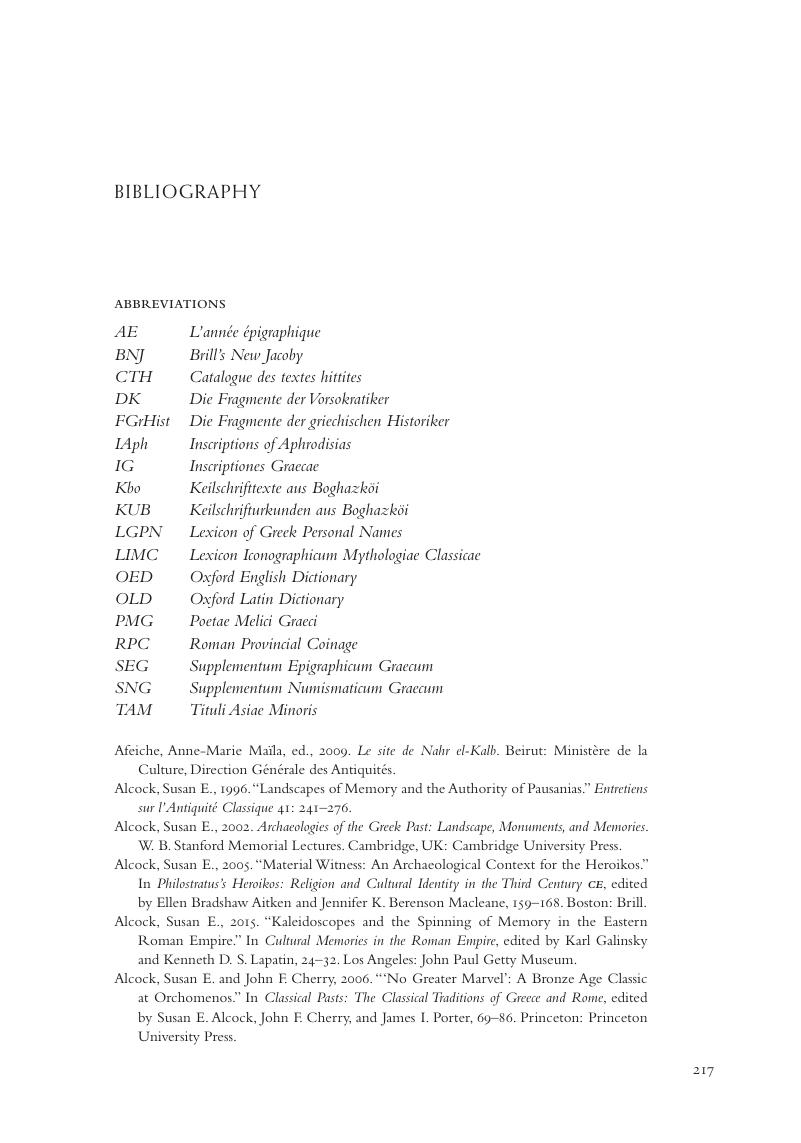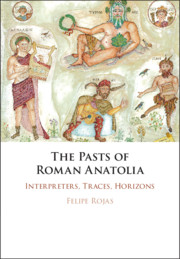Book contents
- The Pasts of Roman Anatolia
- The Pasts of Roman Anatolia
- Copyright page
- Dedication
- Contents
- Figures
- Maps
- Frontispiece
- Note on Cover Illustration
- Acknowledgments
- Maps
- One Introduction
- Two Interpreters
- Three Traces
- Four Horizons
- Five Beyond Anatolia
- Six The Past in Things: Ancient Archaeophilia and Modern Archaeology
- Notes
- Bibliography
- Index of Ancient Sources
- General Index
- References
Bibliography
Published online by Cambridge University Press: 04 October 2019
- The Pasts of Roman Anatolia
- The Pasts of Roman Anatolia
- Copyright page
- Dedication
- Contents
- Figures
- Maps
- Frontispiece
- Note on Cover Illustration
- Acknowledgments
- Maps
- One Introduction
- Two Interpreters
- Three Traces
- Four Horizons
- Five Beyond Anatolia
- Six The Past in Things: Ancient Archaeophilia and Modern Archaeology
- Notes
- Bibliography
- Index of Ancient Sources
- General Index
- References
Summary

- Type
- Chapter
- Information
- The Pasts of Roman AnatoliaInterpreters, Traces, Horizons, pp. 217 - 240Publisher: Cambridge University PressPrint publication year: 2019
References
Bibliography
L’année épigraphique
Brill’s New Jacoby
Catalogue des textes hittites
Die Fragmente der Vorsokratiker
Die Fragmente der griechischen Historiker
Inscriptions of Aphrodisias
Inscriptiones Graecae
Keilschrifttexte aus Boghazköi
Keilschrifturkunden aus Boghazköi
Lexicon of Greek Personal Names
Lexicon Iconographicum Mythologiae Classicae
Oxford English Dictionary
Oxford Latin Dictionary
Poetae Melici Graeci
Roman Provincial Coinage
Supplementum Epigraphicum Graecum
Supplementum Numismaticum Graecum
Tituli Asiae Minoris



